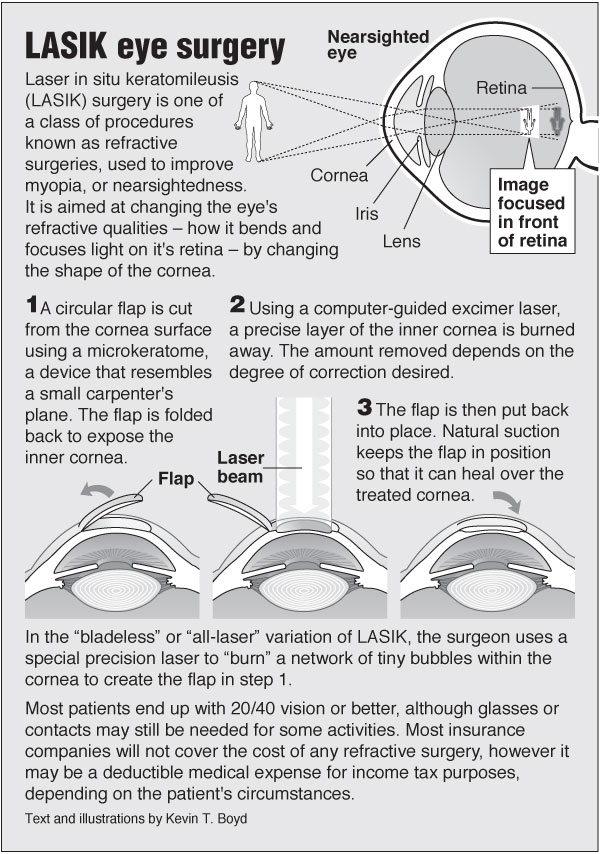If you're pondering SMILE eye surgical procedure, ponder this: are you prepared to welcome possible aesthetic liberty, or does the thought of any risks make you wait? Your decision will certainly rest on a careful balance of weighing the benefits versus the unpredictabilities. It's important to delve much deeper right into the nuances of SMILE surgical procedure to make an educated choice that aligns with your aesthetic goals.
Understanding SMILE Eye Surgical Treatment
When considering SMILE Eye Surgery, it is very important to comprehend the treatment and its benefits. SMILE, which represents Little Incision Lenticule Extraction, is a minimally invasive laser eye surgical treatment that remedies common vision issues like nearsightedness (nearsightedness).
Throughout the procedure, your eye cosmetic surgeon will certainly use a femtosecond laser to develop a tiny cut in your cornea. Via this incision, a small disc of cells called a lenticule is gotten rid of, improving the cornea and remedying your vision.
Among the essential benefits of SMILE Eye Surgical procedure is its fast healing time. Lots of individuals experience boosted vision within a day or 2 after the treatment, with minimal discomfort.
In addition, SMILE is recognized for its high success rate in providing long-term vision improvement. Unlike LASIK, SMILE does not need the production of a flap in the cornea, reducing the threat of complications and permitting an extra stable corneal structure post-surgery.
Recognizing the treatment and its advantages is important when thinking about SMILE Eye Surgery for vision correction.
Pros and Cons of SMILE
Considering SMILE Eye Surgery for vision improvement features numerous benefits and prospective drawbacks.
One of the primary pros of SMILE is its minimally intrusive nature, as it involves a tiny incision and typically causes quick healing times. The procedure is likewise understood for causing very little pain and dry eye signs and symptoms post-surgery compared to other vision improvement techniques. Furthermore, SMILE has actually been shown to give excellent visual results, with many individuals achieving 20/20 vision or much better.
On the other hand, a possible disadvantage of SMILE is that it might not appropriate for individuals with serious refractive errors, as the therapy array is rather minimal compared to LASIK. Another factor to consider is that the discovering contour for cosmetic surgeons executing SMILE can influence the schedule of skilled suppliers in certain locations.
It is necessary to evaluate these advantages and disadvantages very carefully when deciding if SMILE is the appropriate choice for your vision adjustment needs.
Figuring Out Eligibility for SMILE
To identify if you're eligible for SMILE eye surgery, your optometrist will certainly perform a thorough examination of your eye health and wellness and vision demands. Throughout this assessment, factors such as the security of your vision prescription, the thickness of your cornea, and the total health and wellness of your eyes will certainly be analyzed.
Normally, candidates for SMILE are over 22 years old, have a steady vision prescription for a minimum of a year, and have healthy and balanced corneas without conditions like keratoconus.
Your optometrist will certainly likewise consider your total eye health, any existing eye conditions, and your lifestyle requires to establish if SMILE is the best option for you. It's essential to connect any details aesthetic needs or concerns you may have throughout this analysis to make certain that the therapy lines up with your expectations.
If you aren't eligible for SMILE, your ophthalmologist may recommend alternate vision improvement options that far better fit your individual requirements and eye health and wellness condition.
Verdict
Inevitably, deciding whether SMILE eye surgical procedure is right for you calls for careful consideration of your specific eye wellness and visual needs. Consult with your optometrist to determine your qualification for the procedure and evaluate the possible benefits and downsides. Keep in see this to connect any worries or concerns you may have throughout the assessment procedure to make an enlightened decision concerning your vision modification alternatives.
